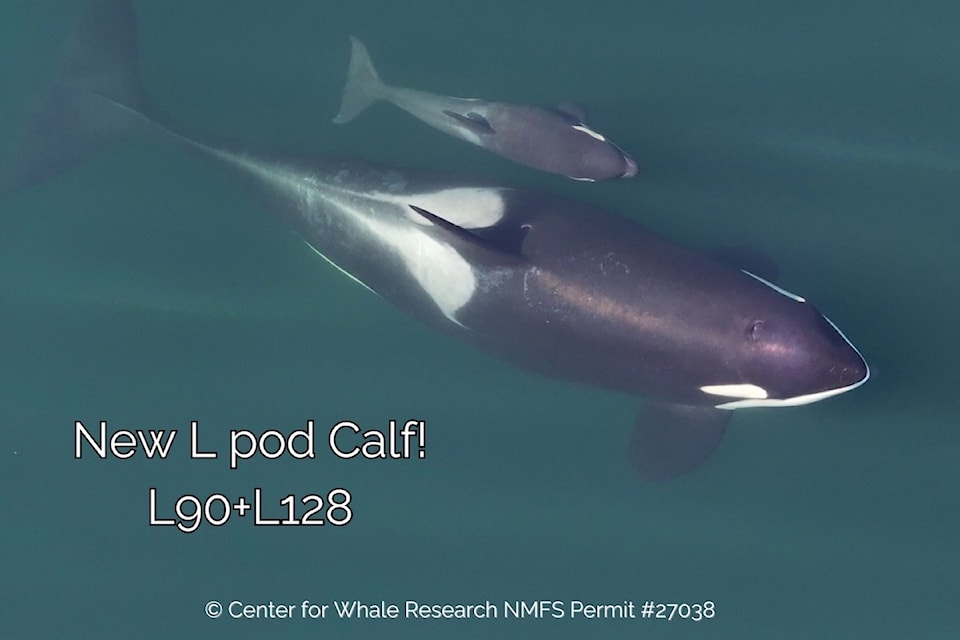Researchers have identified a new southern resident killer whale calf among the population of endangered orcas that frequent the waters around Greater Victoria.
The Centre for Whale Research said it observed the calf and its mother on their own in the Haro Strait on Monday (Sept. 16).
"The calf (L128) is VERY new; it's tiny and has very clear fetal folds. Our best guess is that it was born within the last three days. We can also confirm the calf is nursing and moving normally," Michael Weiss, research director, said in post on the centre's website. "We will continue monitoring mother and the calf while they are in the area."
The Washington state-based research agency observed Southern Resident killer whale pods travelling in the Strait of Georgia on Sept. 13; two days later, the mammals were seen heading west off of Sooke.
There are only 75 Southern Resident individuals remaining and they face continued threats from environmental pollution and depleted Chinook salmon stocks that make up their primary food source.
The Orca Behavior Institute also observed the 31-year-old orca mom and her newborn in recent days.
"Just as surprising as the calf was perhaps the fact that there were no other whales in sight: it was just the two of them," the institute said in a Monday Facebook post describing its encounter with the killer whales near San Juan Island.
On Wednesday, the Orca Behaviour Institute posted videos of the mother and baby in the Haro Strait – the channel separating Greater Victoria and Washington state.
"Mom has been actively foraging and calf has looked very spunky," the institute said.
Three kinds of orcas inhabit the waters off of North America's west coast. The Southern Resident population was significantly reduced in the '60s and '70s as they were captured for marine park exhibitions. Their numbers climbed toward 100 by the mid '90s, but declined again to 78 by 2001.



